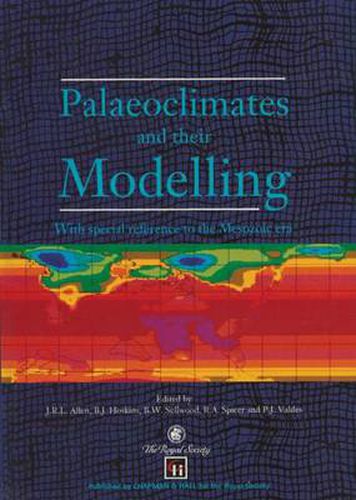Readings Newsletter
Become a Readings Member to make your shopping experience even easier.
Sign in or sign up for free!
You’re not far away from qualifying for FREE standard shipping within Australia
You’ve qualified for FREE standard shipping within Australia
The cart is loading…






This title is printed to order. This book may have been self-published. If so, we cannot guarantee the quality of the content. In the main most books will have gone through the editing process however some may not. We therefore suggest that you be aware of this before ordering this book. If in doubt check either the author or publisher’s details as we are unable to accept any returns unless they are faulty. Please contact us if you have any questions.
The climate of the Earth has undergone many changes and for those times when geologic data are widespread and abundant the Mesozoic appears to have been one of the warmest intervals. This was a time during which the single continent Pangea disintegrated into continental units similar to those of today, a time when there were no significant polar ice caps and sea level was generally much higher than at the present time, and a time when dinosaurs apparently dominated terrestrial faunas and the flowering plants evolved. Understanding this alien world, ancestral to ours, is intrinsically interesting, intellectually challenging, and offers opportunities for more effective targeting of sites where commercially important geological resources may be found. It also provides critical insights into the operation of coupled Earth systems (biospheric, atmospheric, hydrospheric and geospheric) under extreme ‘greenhouse’ conditions, and therefore may have relevance to possible future global change. Our intention in organizing this Discussion Meeting was to bring together those who gather and interpret geologic data with those who model global climates from first principles. The community of workers who study the Quaternary have made significant advances by integrating and comparing palaeodata and climate model experiments. Although we have focused not on the Quaternary ‘icehouse’ but on the Mesozoic ‘hothouse’ climate we are well aware that approaches used in the study of the Quaternary may have relevance to earlier times.
$9.00 standard shipping within Australia
FREE standard shipping within Australia for orders over $100.00
Express & International shipping calculated at checkout
Stock availability can be subject to change without notice. We recommend calling the shop or contacting our online team to check availability of low stock items. Please see our Shopping Online page for more details.
This title is printed to order. This book may have been self-published. If so, we cannot guarantee the quality of the content. In the main most books will have gone through the editing process however some may not. We therefore suggest that you be aware of this before ordering this book. If in doubt check either the author or publisher’s details as we are unable to accept any returns unless they are faulty. Please contact us if you have any questions.
The climate of the Earth has undergone many changes and for those times when geologic data are widespread and abundant the Mesozoic appears to have been one of the warmest intervals. This was a time during which the single continent Pangea disintegrated into continental units similar to those of today, a time when there were no significant polar ice caps and sea level was generally much higher than at the present time, and a time when dinosaurs apparently dominated terrestrial faunas and the flowering plants evolved. Understanding this alien world, ancestral to ours, is intrinsically interesting, intellectually challenging, and offers opportunities for more effective targeting of sites where commercially important geological resources may be found. It also provides critical insights into the operation of coupled Earth systems (biospheric, atmospheric, hydrospheric and geospheric) under extreme ‘greenhouse’ conditions, and therefore may have relevance to possible future global change. Our intention in organizing this Discussion Meeting was to bring together those who gather and interpret geologic data with those who model global climates from first principles. The community of workers who study the Quaternary have made significant advances by integrating and comparing palaeodata and climate model experiments. Although we have focused not on the Quaternary ‘icehouse’ but on the Mesozoic ‘hothouse’ climate we are well aware that approaches used in the study of the Quaternary may have relevance to earlier times.